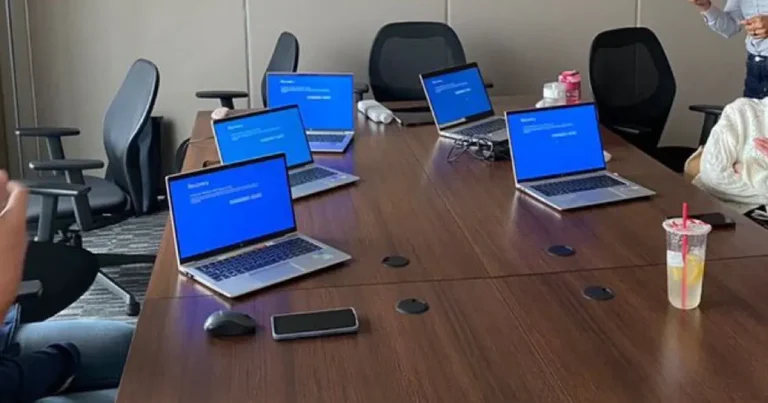20-7-2024 (CALIFORNIA) A routine update to CrowdStrike’s widely-used cybersecurity software has inadvertently triggered a global technological meltdown, leaving security experts questioning the company’s quality assurance protocols. The incident, which occurred on Friday, resulted in widespread system crashes for clients using Microsoft’s Windows operating system, affecting an array of sectors from global banking to healthcare and government services.
The latest version of CrowdStrike’s Falcon Sensor software, ironically designed to bolster client systems against hacking threats, contained faulty code that led to one of the most extensive tech outages in recent memory. The update’s deployment has raised serious concerns about the rigour of pre-release testing procedures in the cybersecurity industry.
Steve Cobb, Chief Security Officer at Security Scorecard, which also experienced disruptions, speculated on the root cause: “It appears that the vetting or sandboxing process they employ for code inspection may have failed to include this particular file, or it somehow slipped through the cracks.”
The repercussions of the glitch became apparent almost immediately after the update’s rollout. Social media platforms were inundated with images of the infamous “blue screens of death” – error messages displayed on affected computers, signalling critical system failures.
Patrick Wardle, a security researcher specialising in operating system threats, conducted an analysis that pinpointed the problematic code. He explained that the issue lay “in a file containing either configuration information or signatures,” noting that such signatures are crucial for detecting specific types of malicious code or malware.
Wardle added, “Security products routinely update their signatures, often daily, to ensure protection against the latest threats. This frequent update cycle may have contributed to a less thorough testing process.”
The incident has spotlighted the delicate balance between rapid deployment of security updates and thorough quality assurance. John Hammond, Principal Security Researcher at Huntress Labs, advocated for a more cautious approach: “Ideally, this would have been rolled out to a limited pool first. That’s a safer strategy to avoid such widespread disruption.”
While CrowdStrike has since released information to rectify affected systems, experts warn that the recovery process will be time-consuming, requiring manual removal of the flawed code.
This is not an isolated incident in the cybersecurity industry. In 2010, McAfee faced a similar predicament when a buggy antivirus update paralysed hundreds of thousands of computers. However, the scale of the current CrowdStrike outage underscores the company’s market dominance, with over half of Fortune 500 companies and numerous government bodies, including the U.S. Cybersecurity and Infrastructure Security Agency, relying on their software.




